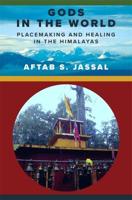Publisher's Synopsis
Tibet's Mount Kailas is one of the world's great pilgrimage centres, renowned as an ancient sacred site that embodies a universal sacrality. But Kailas Histories: Renunciate Traditions and the Construction of Himalayan Sacred Geography demonstrates that this understanding is a recent construction by British colonial, Hindu modernist, and New Age interests. Using multiple sources, including fieldwork, Alex McKay describes how the early Indic vision of a heavenly mountain named Kailas became identified with actual mountains. He emphasises renunciate agency in demonstrating how local beliefs were subsumed as Kailas developed within Hindu, Buddhist, and Bön traditions, how five mountains in the Indian Himalayan are also named Kailas, and how Kailas sacred geography constructions and a sacred Ganges source region were related.











